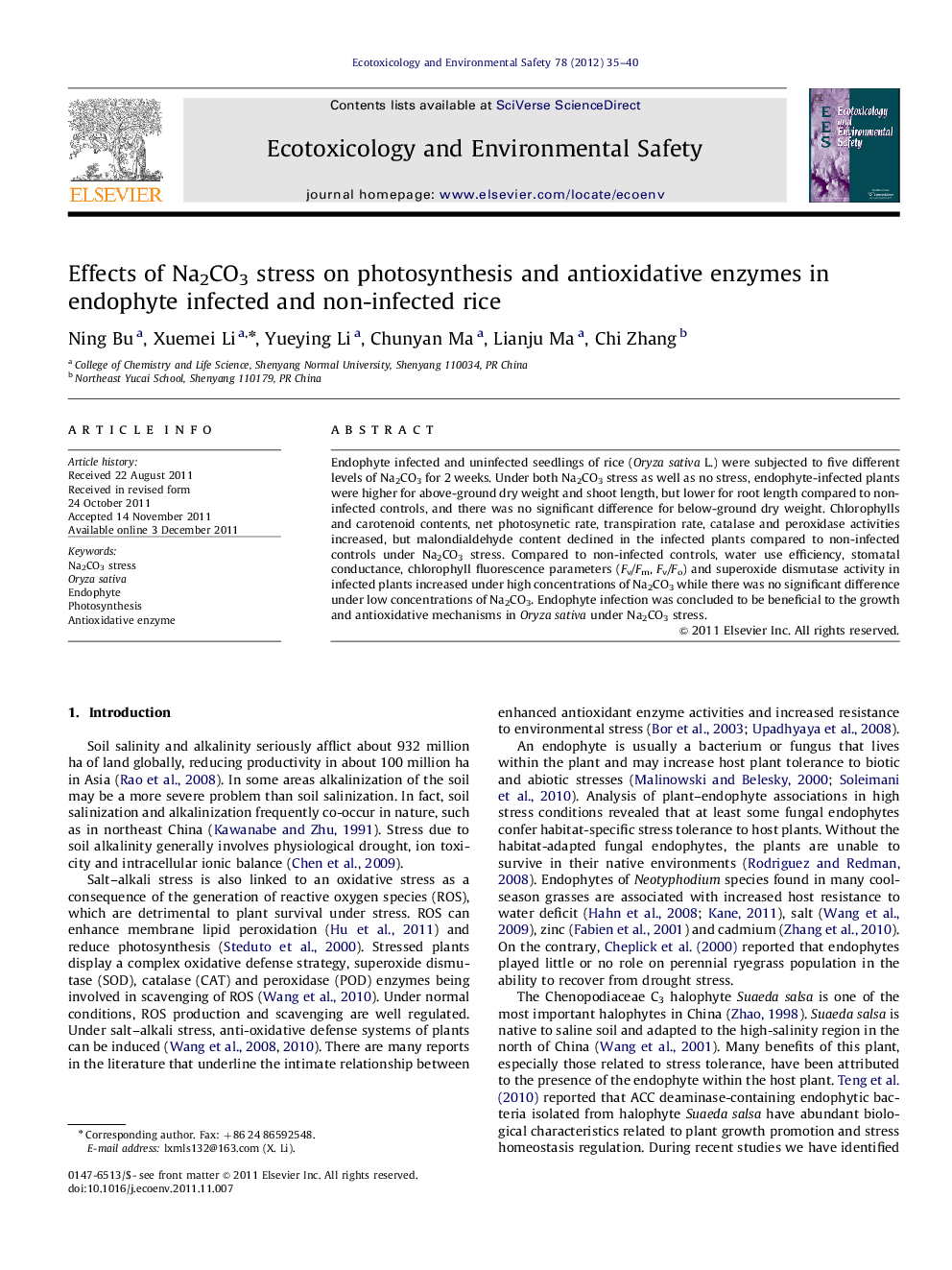| Article ID | Journal | Published Year | Pages | File Type |
|---|---|---|---|---|
| 4420887 | Ecotoxicology and Environmental Safety | 2012 | 6 Pages |
Endophyte infected and uninfected seedlings of rice (Oryza sativa L.) were subjected to five different levels of Na2CO3 for 2 weeks. Under both Na2CO3 stress as well as no stress, endophyte-infected plants were higher for above-ground dry weight and shoot length, but lower for root length compared to non-infected controls, and there was no significant difference for below-ground dry weight. Chlorophylls and carotenoid contents, net photosynetic rate, transpiration rate, catalase and peroxidase activities increased, but malondialdehyde content declined in the infected plants compared to non-infected controls under Na2CO3 stress. Compared to non-infected controls, water use efficiency, stomatal conductance, chlorophyll fluorescence parameters (Fv/Fm, Fv/Fo) and superoxide dismutase activity in infected plants increased under high concentrations of Na2CO3 while there was no significant difference under low concentrations of Na2CO3. Endophyte infection was concluded to be beneficial to the growth and antioxidative mechanisms in Oryza sativa under Na2CO3 stress.
► Fungal endophyte helps rice in better performance under moderate Na2CO3 stress. ► Under Na2CO3 stress, endophyte enhanced photosynthesis and antioxidant enzymes. ► Endophyte decreased the lipid peroxidation. ► Introduction of fungal endophyte EF0801 gives economical benefits to crops. ► Also this study was used for rehabilitation of saline–alkaline soil using endophyte.
